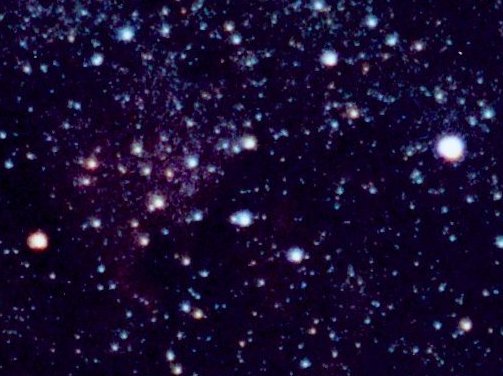
 |
The region of Deneb. First magnitude Deneb (Alpha Cygni) shines at far right, while fourth magnitude Xi Cygni lies at the far left edge just below center. The color contrast is obvious, Deneb a white class A supergiant, Xi Cyg a much cooler mid-class-K orange supergiant. In between (and closer to Xi) is the faint reddish glow of the North America Nebula, NGC 7000; the fainter Pelican Nebula is down and to the right. See a labelled version. |